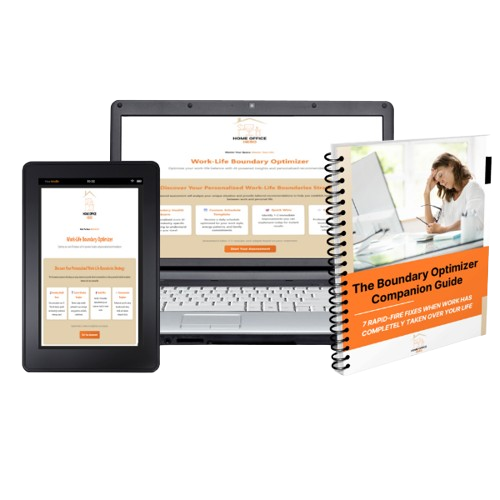“When was the last time you asked me about my day?”
Hayley’s question hit me like a tackle I didn’t see coming.
We were sitting at dinner—Shaw was at a friend’s house for the evening, so we actually had proper adult conversation time. Except we didn’t. We had logistics time. School calendar coordination. Client deadline warnings. Shaw’s upcoming dentist appointment. Which bills needed paying. Who was handling morning drop-off tomorrow.
I opened my mouth to defend myself, then closed it. Because I genuinely couldn’t remember the answer to her question. When had I last asked her about her work, her thoughts, her feelings—anything beyond the operational details of keeping our household running?
“I don’t even know what projects you’re working on right now,” she said quietly. Not angry. Just… sad. “We live in the same house. We see each other every day. But I feel like I barely know you anymore.”
She was right. In my obsession with “balancing” work and parenting, I’d reduced my partner to a project manager. Our conversations had become status updates. Our time together had become coordination meetings. Even sitting across from her at dinner, my mind was half-reviewing tomorrow’s client presentation.
I was physically present. Mentally? I was already in tomorrow’s Zoom call.
That night, lying awake at 2 AM, I realized: I wasn’t failing at work-life balance because I couldn’t manage my time. I was failing because I’d lost the ability to be fully present in whichever mode I was in. When I worked, I felt guilty about family. When I was with family, I worried about work. I was perpetually half-present everywhere, which meant I was fully present nowhere.
This is part of our complete guide on work-life balance for remote working parents. If you’ve ever found yourself physically with your family but mentally still at work, constantly replaying work conversations while your kids or partner try to connect with you—I’ve been there. Still am some days.
This post will show you the five non-negotiable systems that help you be fully present in whichever mode you’re in—work mode or family mode. Not perfect balance, but actual presence. Because the people you love deserve more than your physical proximity—they deserve your mental attention too.
The Problem: Why Traditional Balance Advice Fails Parents Working From Home
After 6 years building my digital marketing agency while raising Shaw, I’ve tried every productivity hack and balance strategy out there. Time blocking. The Pomodoro Technique. Setting intentions. Mindfulness apps.
None of them solved the core problem: I couldn’t switch off.
Here’s what nobody tells you about working from home with kids: closing your laptop doesn’t mean you’ve stopped working. Leaving your office doesn’t mean you’ve left work behind. The real battle isn’t managing your time—it’s managing your mental presence.
Most advice about balancing work and parenting focuses on schedules and boundaries. “Work these hours, parent these hours.” But even when I followed those schedules perfectly, I’d sit down for family dinner still mentally processing a client problem. I’d read bedtime stories while thinking about tomorrow’s deadline. I’d play in the garden while running through my to-do list in my head.
The work-life boundary wasn’t being crossed by my actions—it was being crossed by my thoughts. And that’s infinitely harder to control.
During the pandemic, I watched other remote working parents struggle with the same thing. They’d “finish work” at 5 PM, close their laptops, and spend the evening physically present but mentally absent. Their kids could sense it. Their partners could sense it. And the guilt from that half-presence was worse than working late would have been.
This matters because when you’re never fully present anywhere, both roles suffer. Your work performance drops because family interruptions break your focus. Your parenting quality declines because you’re distracted and impatient. And your mental health takes a hit because you never get the relief of being “done” with either role.
I didn’t need better time management. I needed systems that would help me be mentally all-in, wherever I was.
The Solution: 5 Non-Negotiable Systems for Mental Presence
The systems I’m about to share aren’t just about managing your time—they’re about managing your attention and mental state. These help you fully commit to whatever mode you’re in: work mode or parent mode. Not simultaneously. Sequentially.
System 1: The Energy-Based Schedule (Not Time-Based)
Forget trying to work 9-5 with kids at home. It won’t happen.
Instead, I map my work to my actual energy levels and my son’s natural rhythms. My peak focus hours are 5-7 AM and 8-10 PM—when Shaw is asleep. That’s when I do my most demanding work: strategy, writing, complex problem-solving.
The middle of the day? That’s for tasks that can handle interruptions: emails, quick calls, administrative work, anything that doesn’t require deep thought.
Here’s what this actually looks like:
- 5-7 AM: Deep work on client projects (90 minutes of uninterrupted focus)
- 7-9 AM: Family time—breakfast, school prep, morning chaos
- 9 AM-3 PM: Flexible work—calls, emails, meetings, anything interruptible
- 3-6 PM: Family time—pickup, dinner, homework, actual parenting
- 8-10 PM: Deep work round two or catch-up on anything urgent
This isn’t about working more hours. It’s about working during hours that actually work. Some days I only get 4-5 hours of real work done. But they’re focused, productive hours—not 8 hours of distracted half-working while feeling guilty about not being present for my son.
When I work during my peak energy times, I can fully commit mentally. And when I’m done, I’m actually done—not pretending to be off while my brain keeps working.
Your schedule will look different. Maybe your kids are teenagers who sleep until noon. Maybe you’re a night owl who does your best work at midnight. The point is to stop fighting your natural energy and your family’s actual needs.
System 2: The Physical Boundary System
Physical boundaries aren’t just about protecting your work time—they’re about helping your brain make the mental shift between work mode and family mode.
When Shaw was younger, he didn’t understand why I couldn’t play when I was “right there” in the house. To him, if I was home, I was available. But more importantly, I couldn’t make the mental shift when my workspace and family space were indistinguishable.
So I created a visual signal even a 4-year-old could understand:
The Door System: This is the only signal I use, and it works brilliantly. When my office door is closed, it means emergency-only interruptions—client calls, important deadlines, deep work that requires total focus. When it’s partially open, quick check-ins are fine for genuinely important things. When it’s wide open, I’m intentionally available and wrapping up.
Shaw learned this in about a week. The key was consistency—I had to stick to what the door signals meant, every single time. If I let “just one quick interruption” slide when the door was closed, the whole system would break down.
The door system worked for Shaw, but I needed something similar for Hayley. We created what we call “Available vs. Occupied” signals—not just for work, but for any focused activity. When I’m in deep work, she knows I’m unavailable. When she’s in her own focus time (reading, her own work, personal projects), I respect that boundary equally. It sounds transactional, but it actually created more quality connection time—because we both knew when we had each other’s full attention versus when we needed space.
The Timer Agreement: For younger kids (ages 4-7), combining the door system with a visible timer works even better. “Dad’s working for 25 minutes with the door closed, then I’ll come play for 10 minutes.” Kids can see the countdown. They learn to wait. You show up consistently when you say you will, which builds trust.
This isn’t about keeping your kids away. It’s about teaching them that work time and family time are both important, both respected, and both protected. Shaw now understands that when I’m fully working, it means I can be fully present later.

System 3: The Crisis Management Protocol
No matter how good your systems are, chaos happens. Kids get sick. Clients have emergencies. Technology fails during important presentations.
Here’s my emergency protocol:
For Kid Emergencies:
- Keep a “Crisis Drawer” stocked with new toys, special snacks, and activities reserved only for work emergencies
- Have a backup contact list—partner, nearby family, trusted neighbor, emergency childcare
- Accept that sometimes you’ll need to reschedule that meeting, and that’s okay
For Work Emergencies:
- Build buffer time into every deadline (I add 20% to every timeline)
- Have a “bathroom office” setup—laptop, hotspot, headphones—for when you need to work from anywhere
- Keep templates ready: “I have a family situation and need to reschedule” emails that you can send in 30 seconds
Last month, Shaw got sent home from school with a stomach bug on the same day I had three client presentations. I moved two calls, delivered one presentation from my phone in the bathroom (true story), and spent the afternoon holding a bucket and reading stories. None of my clients fired me. Shaw got the care he needed. It wasn’t perfect, but the systems meant it wasn’t catastrophic.
System 4: The Communication Framework
The biggest mistake I made early on was not communicating my boundaries to anyone—not my clients, not my family, not even myself.
For Clients: I now set expectations up front. My response time is within 24 business hours, not immediately. My office hours are 9 AM-5 PM Monday-Friday. Weekend emails get answered Monday. Emergency support requires a premium rate. Most clients respect this—and the ones who don’t aren’t the right clients anyway.
For Family: Weekly family meetings where we review the upcoming schedule. “Dad has a big deadline Wednesday, so I’ll be working late Tuesday and Wednesday nights.” Shaw knows what to expect. My wife Hayley knows when she needs backup plans.
For Myself: I track what actually works. When do I feel most productive? When do I feel most present with family? When am I just pretending to work while actually scrolling my phone? Honest assessment, weekly adjustment.
This is part of learning to set work from home boundaries and managing work-life integration as a parent. The boundaries aren’t about saying no—they’re about being clear about when you can say yes fully.
System 5: The Weekly Reset
Every Sunday evening, I spend 30 minutes planning the upcoming week. Not just work tasks—everything.
I review:
- What’s on Shaw’s school schedule (field trips, early dismissals, school holidays)
- What’s on my work calendar (deadlines, calls, important projects)
- Where the conflicts are and how I’ll handle them
- What I’m saying no to this week (because you can’t do everything)
I also review what worked and what didn’t last week. Did I overcommit? Did I have enough family time? Did I actually use those 5-7 AM work blocks or did I snooze through them?
The Sunday review also became relationship time with Hayley—not just logistics, but actual connection. We spend the first 10 minutes of our planning session asking each other: “How are you actually doing? What do you need from me this week? When can we have real conversation time?” This prevents us from becoming just co-parents and business managers living in the same house.
This isn’t about perfect planning. It’s about intentional choices. You’re not failing at balance when things go wrong—you’re adjusting your systems based on new information.

Implementation: Your First Steps
Start with just one system this week. Not all five—that’s overwhelming and likely to fail.
Pick the one that will give you the biggest immediate relief:
- Struggling to be mentally present? Start with System 2 (Physical Boundaries) to help your brain switch modes
- Exhausted by trying to work 9-5? Try System 1 (Energy-Based Schedule)
- Drowning in crisis mode? Build System 3 (Crisis Protocol)
What to expect: The first week will feel awkward. Your kids will test the boundaries. You’ll catch yourself mentally at work during family time. You’ll forget to use your red cup. That’s normal. The goal is progress, not perfection.
Common mistakes to avoid:
- Trying to implement everything at once
- Not communicating the changes to your family
- Expecting to switch mental modes perfectly from day one
- Giving up after catching yourself being mentally absent
- Waiting for “the right time” to start (there isn’t one)
The goal isn’t perfect mental presence 100% of the time. It’s going from being mentally absent 90% of the time to being mentally present 70% of the time. That’s a massive, life-changing improvement.
Conclusion
Balancing work and parenting from home isn’t about achieving some perfect equilibrium where everything gets equal time. It’s about building systems that let you be mentally fully present for work when you’re working and mentally fully present for family when you’re parenting.
The real breakthrough isn’t better time management—it’s learning to switch mental modes completely. When you’re in work mode, you’re all-in. When you’re in parent mode, you’re all-in. No half-measures, no guilt, no mental absence while physically present.
Here’s what actually matters:
- Map your work to your energy, not some arbitrary schedule, so you can fully commit during work blocks
- Create visible boundaries that signal to your brain (and your family) which mode you’re in
- Have a crisis plan because chaos will happen
- Communicate your boundaries to everyone, so they understand when you’re available—mentally and physically
- Review and adjust weekly based on what actually helps you be present
Shaw doesn’t remember the times I answered emails while he played. Hayley doesn’t resent the times I needed to work late—because she knows when my office door is closed, I’m fully working, and when it’s open, I’m fully present. That clarity benefits everyone. Those moments only became possible when I stopped trying to be present everywhere and started being fully present somewhere.
What’s your biggest struggle with being mentally present? Are you physically there but mentally still at work, or vice versa? Drop a comment below—I read and respond to every one, and sometimes the best solutions come from the community.ry one, and sometimes the best solutions come from the community.
Continue Reading
For the complete framework on building sustainable work-life harmony as a remote working parent, see our comprehensive Work-Life Balance for Remote Working Parents: The Complete 2025 Guide.
Related articles you might find helpful:
- Work From Home Parent Schedule: How to Design Your Ideal Day
- Work From Home Boundaries: Setting Limits Without Guilt
Part of the Work-Life Balance & Harmony series. For the complete guide on achieving work-life harmony without sacrificing your career or your family relationships, see our pillar post on work-life balance for remote working parents.










